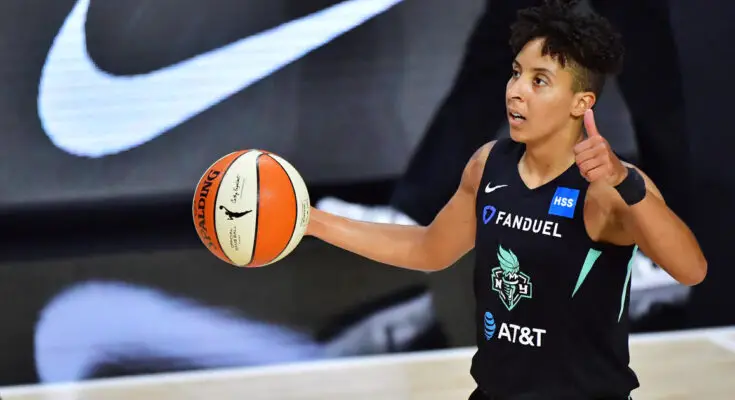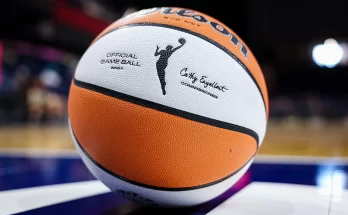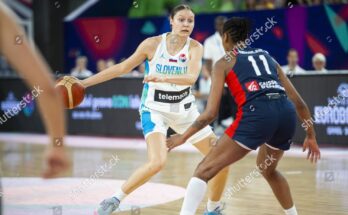With the first New York Liberty game fast-approaching on May 14th; more than an exciting season is in store: Layshia Clarendon’s ninth season marks a historic moment for non-binary and trans communities.
Clarendon, who came out as transgender non-binary in December of 2020, will play as the WNBA’s first openly genderqueer athlete. Since coming out, Clarendon—who uses she/her/they/them/he/him pronouns interchangeably—has proudly shared their journey with the world.
In a moving Instagram post shared on January 29th of this year; Clarendon uploaded pictures of himself after undergoing top surgery. “I want Trans people to know and see that we’ve always existed & no one can erase us!”, the Liberty guard wrote.
Clarendon’s willingness to publicize their experience as a trans, non-binary individual is of particular importance given the endless obstacles non-binary and/or trans people face—particularly within the world of sports: bill 500, passed in March of 2020 by Idaho’s legislature, bans transgender girls and women from competing in female sports leagues. Worst of all, this bill is only one of many proposed this year that would limit the ability of trans folk to participate in sports leagues; that corresponds to their gender.
I’m usually not scared to share news publicly but the amount of hate, myths & ignorance actually had me debating sharing this joy. I had Top Surgery! I’m feeling free & euphoric in my body & want Trans people to know and see that we’ve always existed & no one can erase us! 🏳️⚧️✊🏽❤️ pic.twitter.com/6ERDPoQGwb
— Layshia Clarendon (@Layshiac) January 29, 2021
Though legislature regarding transgender athletes’ participation in sports ranges from state to state; the prevalence of anti-trans lawmaking is indicative of a profound flaw within the competitive sport: fear of trans and non-binary folks.
Perhaps—and yes, I know this is optimistic—this fear is not so much rooted in a dislike for non-cisgender individuals as much so much as it is based in alarm towards the unknown.
After all, sports have historically been highly regimented to align with a strict distinction between men and women. But with athletes such as Martina Navratilova claiming that allowing trans women to compete in female professional sports would enable cis men to dominate women’s leagues by posing as trans women; such optimism gets harder and harder to maintain.
So, what happens now that gender labels are beginning to take on new meanings…and maybe even falling apart altogether?

One proposed solution is to eradicate the classification of men and women’s sports in favour of “a biological classification to defend transgender rights”. Biden’s executive order, however, states that transgender female athletes must be permitted to compete against other women.
Whatever the solution may be, the world of athletics needs one…and fast. Clarendon may be the first WNBA player to announce her non-binary gender identity. But she certainly will not be the last. So far, though, the WNBA has shown nothing but support for the Liberty veteran.
Soon, however, transgender athletes will be coming out from across a variety of leagues. And not all of them are guaranteed to be as inclusive as the WNBA has been so far.
Given Clarendon’s courage in publicly sharing his experience as a trans; non-binary person in addition to the WNBA’s positive response to Clarendon’s identity; it will be difficult for other professional sports leagues to dismiss their athletes who come out as genderqueer.
As of yet, Clarendon and the WNBA are setting a remarkable precedent of tolerance and inclusion. I hope that other leagues will feel compelled to follow it.

When Clarendon sets foot on the court next week, she’ll be taking another step towards solidifying this precedent. More important still; Clarendon will be sending a powerful message to trans and non-binary communities everywhere: gender queer athletes don’t merely deserve to compete, they do.
Follow me on Twitter @Blasphemma and check out Beyond Women’s Sports for more articles on amazing women and their sport.




